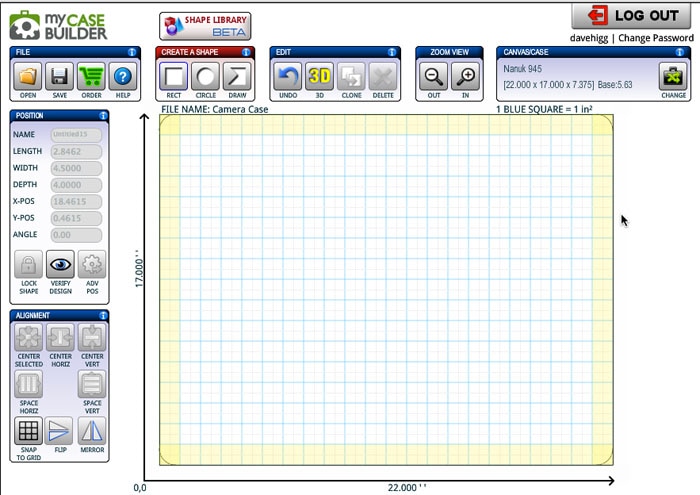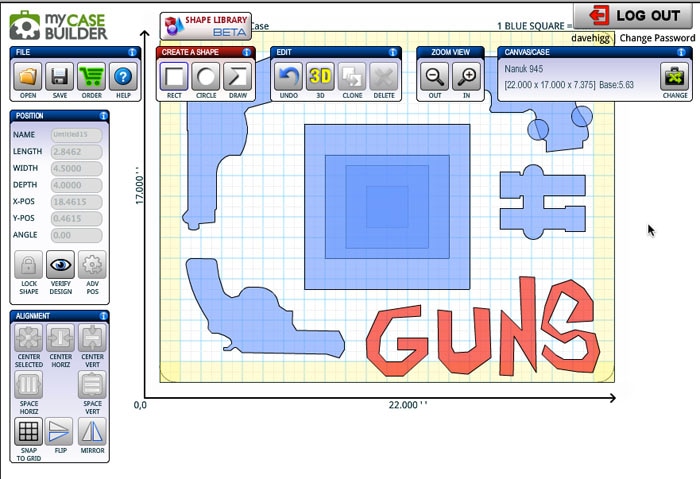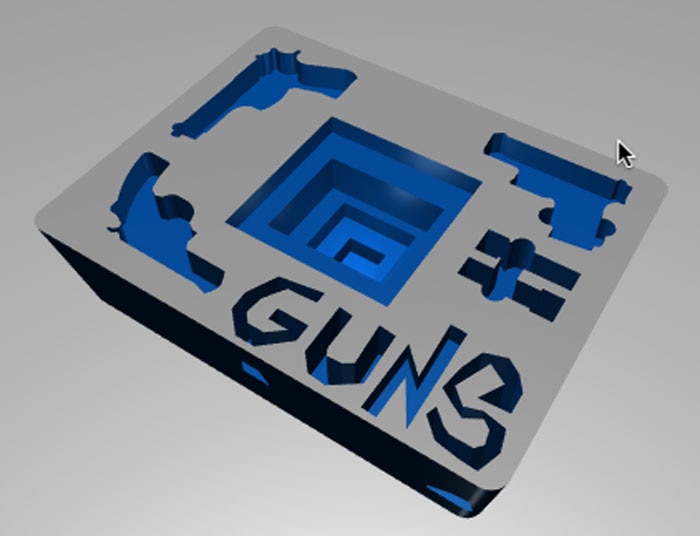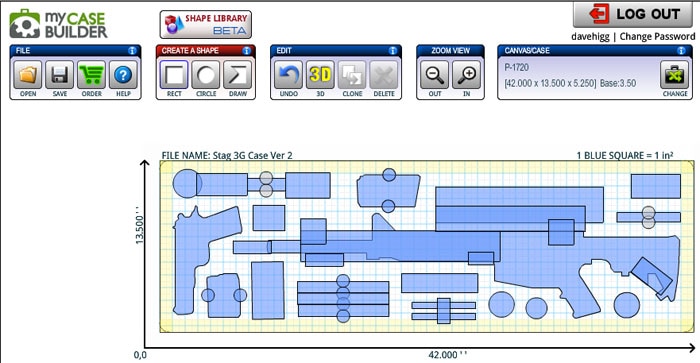Guns need cases. Just yesterday, I loaded up my Pelican 1750 and drove a couple of hours east to shoot some video for a review. It poured down rain. I was shooting at an outdoor range. We were hoping for some breaks in the weather, but were outside in the rain for six hours.

And that’s when a case like the Pelican is worth every penny. They are waterproof, dust proof, and offer great protection against shocks and bumps. I’m like a walking Pelican billboard. I have a case for my laptop, for my long guns, and for my cameras and SD cards, too.
But cutting the foam interiors of larger cases to match the unique needs of each individual shooter is a challenge. You can buy pre-cut inserts and try to make them work. Or you can try to cut the foam yourself, or use the pick-and-pluck options available in some cases. But if you mess up, you have to start over.
Or you can design a custom insert with experts who will cut it for you, and insure their work.
MyCaseBuilder.com
MyCaseBuilder.com offers a complete line of cases, and an infinite array of foam inserts. If you already own a case, but need the foam, their interactive design program will allow you to design exactly what you need. If you need a case, too, they sell cases and foam.
I ran into the folks from MyCaseBuilder at the NRA convention, and I got a walk through of their design software. It is very user friendly. The design features are clear and can be used by almost anyone, regardless of the user’s technological competence.

The first step is to choose a case. This one is Nanuk 945 that I bought a couple of years ago to use as a camera case. It came with pick and pluck foam that I’ve never picked or plucked. By clicking on some of the options, I can add geometric shapes of negative space into the interior of foam. Precise sizes can be typed in, or shapes can be manipulated with the mouse.
Alignment features can be used to straighten, flip, mirror, etc. The shape library, which is steadily growing, offers ready made cut outs for guns. Or you can draw free hand. The yellow border is there to serve as a reminder to leave enough functional foam for padding. And you can have the computer check your design for any potential problems (like my GUNS cut out in red below).

Once you have everything set in the two dimensional layout software, you can click on a button that will render the design in three dimensions. The 3D rendering can be rotated. At first I thought this feature was a bit of a novelty, but it is very effective at highlighting things you won’t see in the flat drawing, like cut outs that are too close together, or thin walls of foam left between adjoining cut outs.

Camera cases are useful. But this is Guns.com. How does it work for guns?
Mock up of a gun case
I’ve been taking the Stag 3G with me everywhere. It is the only AR I have right now, so it is getting a lot of attention. And it is one tremendous gun, and not one that I’m likely to toss in the back of a pickup truck. But MyCaseBuilder’s shape library has an M4 cut out, but not a long barreled AR like the 3G (not yet–new shapes are being added all the time).
But that’s when the customizable features come into play. I began with a Pelican 1720. The case is just a bit shorter than the 1750 (which is so long that it can be a beast to get into or out of a car).

And I wanted to pack it full, if only to test out the features of MyCaseBuilder. I began with the standard cut out of the M4 (which can bee seen in a slightly darker shade). That will work for the basic shape of the Stag 3G. The I added some length for the barrel (which isn’t centered quite right in the draft above). I created a rectangle to allow for the 3G’s big rail. By matching the depth of my custom cuts with the depth of the prefab M4 cut-out, the end won’t be noticeable (except for the M4 front sight cut, which I couldn’t fill in).
The optics cut outs are improvised as well. I’m constantly changing scopes on the 3G, so I overcompensated. I also cut deeper rectangles for the Dueck Defense angled iron sights. I added some random cut-outs for a strap and for ear plugs. I put in two cuts for boxes of ammo (one flat, and one more square). I added magazine cut-outs (which can be added flat, or on end). I put in three 30 round mags (stacked together), a 20 round, and a ten round (as I sometimes keep good ammo on hand in smaller mags, which help for prone shooting).

And lastly, I added a 1911 cut-out, a couple of 1911 mags, a custom cut-out for a AR wrench and a Gerber AR tool. And that was about all I could fit. Some of the finger cut outs (used for pulling things from the foam) cross into the 1″ border, but the design is about right.
How much does it cost?
The foam varies by size, of course. The 1720 is $138.74. It doesn’t matter how many cuts you make. And there are two types of foam to choose from: a polyethylene base foam (which is firm) or a ester foam (which is more squishy and forgiving).
The best part, in my opinion, is MyCaseBuilder’s FailSafe protection, which is a form of insurance. For $7.99, you get the assurance that everything will be right, even your measuring mistakes. If the foam isn’t right, send your original foam back and MyCaseBuilder will fix the mistakes and ship it back to you.
I’ve been playing with the functionality of the site for hours, now. And I’m just about ready to put in the order. I’ll be back with a follow-up once I have the foam in the case, and we’ll see just how well it all works.
The post Gear Review: Customized Cases from MyCaseBuilder.com appeared first on Guns.com.
